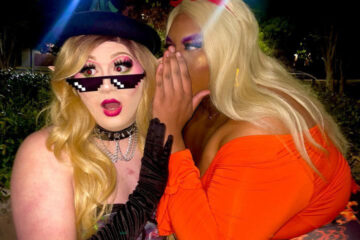With the end of Winthrop University’s second full COVID-restricted semester on the horizon, most of the college’s departments have learned to navigate the challenges brought on by the pandemic and deliver the best possible experiences for their students. In particular, the theatre department has continued to put on astonishing performances despite limitations put in place by CDC guidelines.
One such performance was the recent show Hear Our Voice: Shining a Light on Diversity in Musical Theatre that ran from Feb. 18 to Feb. 21. This show featured a compilation of songs from various Broadway musicals that each related to the themes of diversity, inclusion, and representation.
What sets this show apart from previous Winthrop performances is the fact that, aside from the songs performed, the entire production was designed by the show’s director, Sydney Horton, and the chair of Winthrop’s theatre and dance department, Daniel Gordon.
According to Gordon, the production originally planned for spring was the musical Sister Act. However, after “determining that it would need to be a virtual production,” the decision was made by the department to create their own show.
“By creating our own work,” Gordon said, “it gave us much more freedom to tailor the piece to our specific needs in terms of pandemic response.”
From the beginning of the show’s conception, the main focus was on providing “as many of our students as possible an opportunity to perform,” according to Mr. Gordon. As they worked, Gordon and Horton made preparations for a shift to a fully remote performance if the need arose. “After last spring,” Gordon said, “we were determined not to have to cancel an event ever again. This meant producing works that gave us flexibility, namely public domain works.”
Another focus that the pair had was “being able to utilize content that featured the work of diverse artists,” Gordon said. He thought it was important to have “a production that got us to feature the diversity that is present in the department.” The songs themselves were chosen by Horton, who made the choices with the abilities and needs of the students who auditioned in mind. Gordon said, “As with every production we strive to help our students grow.”
The concept of using a club to act as a backdrop for all of the songs rather than having a string of free-standing performances was a collaborative effort between Horton and scenic design professor Biff Edge.
Gordon was also involved in the production process beyond the planning stages, serving as lighting designer, in collaboration with student associate designer Wren Brooke. “We worked to create an environment that felt welcoming, but could transform with the themes and moods of each piece, as well as contribute to the energy of group numbers,” he said.
Throughout the rehearsal process of the show, numerous safety measures were set in place. According to Gordon, these included “regular wellness checks of cast and crew, providing multiple copies of props so that many people wouldn’t have to handle them, and even a set design that separated the ‘performers’ from the ‘audience.’”
To Gordon, the primary client of any college performance is the performers involved. For him, everything in Winthrop’s theatre and dance department is centered around what is best for their students and increasing their capabilities. However, he does hope that the audiences that saw the performance learned “something about us, about society, and maybe about themselves. Theatre is always a reflection of the world around us.”
As for the future of home-grown Winthrop productions, Gordon said, “It certainly has its place, especially if devised by students. As with everything, there needs to be balance. We recognize the importance of doing published works, and giving our students the opportunity to put such experiences on their resumes. Yet, as the theatre industry evolves, we do see a growth in devised works that can be shared on multiple platforms. We are always interested in preparing our students for what is next.”



